Lavoix presents a review of pharmaceutical trademark and design decisions handed down by French and European Union courts.
I. Trademarks
A. Conditions of validity
To be registered, a trademark must be distinctive, lawful and available. We will examine hereafter some decisions rejecting trademarks that did not comply with the provisions of the French Intellectual Property Code and the European Union trade mark regulation.
1.Trademarks devoid of distinctive character
The trademark WE SEE MORE, TOGETHER applied for « pharmaceutical products for ophtalmological use » and « Drug delivery systems, i.e. an inserter for intravitreal injection of a micro-implant » is not distinctive because it will be directly associated by the relevant public with a promotional message, in particular concerning the treatment of eye disorders and diseases, and because of its direct link with the products in question, it cannot be considered as providing an indication of the commercial origin of these products (EUIPO, January 23, 2023).
2. Sign which cannot constitute trademark
This three-dimensional trademark 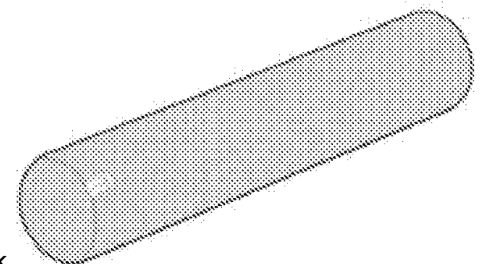 is not distinctive to designate « medical cushions for pregnant women and new mothers; aids to facilitate breastfeeding » because its representation refers to the traditional cylindrical shape of maternity bolster (EUIPO, June 16, 2022).
is not distinctive to designate « medical cushions for pregnant women and new mothers; aids to facilitate breastfeeding » because its representation refers to the traditional cylindrical shape of maternity bolster (EUIPO, June 16, 2022).
3. Descriptive trademark
The trademark STRESS-CONTROL designating in particular « Dietetic substances adapted for medical use, nutritional supplements adapted for medical use, vitamin preparations, dietetic beverages adapted for medical purposes, herbal teas, medicinal tea, mineral dietary supplements » was declared null and void for lack of distinctiveness, thus rendering the infringement claim on which it was based unfounded (Paris Court of Appeal, Pôle 5, chamber 2, June 3, 2022, n°20/18686), the terms of which it is composed being indeed frequently used in the French language and easily understood by the French public, so that that the French public will inevitably establish a direct link between this name and the result of the product it designates, namely to help control stress.
Trademark ICEBOX was rejected for products and services in classes 1, 10 and 11 (namely for refrigerated chemical products, medical equipment and devices used in medical rehabilitation, and alternative medicine services and/or cryotherapy) on the ground that the relevant public, composed of professionals, whose attention is higher than average, will perceive this sign as referring directly to the term « icebox » and to a feature of the products and services claimed, namely the type and destination (EUIPO April 24, 2023).
Trademark BodyLog covering « Pulse meters, medical device and instruments for monitoring blood oxygen saturation, blood pressure measuring devices, pulse rate monitors, electrocardiogram recorders; oxygen concentration monitors for medical use; respiration monitors; oxygen monitors for medical use, medical apparatus and instruments, diabetic monitoring apparatus, glucometers, thermometers for medical use, cardiac monitors to be worn during exercise » was rejected because perceived by the English-speaking public as describing the function of these products, namely to record information about the human body (EUIPO April 26, 2023).
Were also rejected because of descriptiveness the trademark CHECK-FLO for « Medical devices used in vascular, urological, interventional radiology and endoscopy procedures, i.e. introducers and introducer assemblies, hemostasis assemblies, self-sealing adapters », because the English-speaking medical professionals will associate it with products designed to examine or verify the flow of a fluid or gas through an organ or part of an organ over a given period of time (EUIPO April 26, 2023), and the trademark BRIGHT for « dental implants », the English-speaking public being able to associate this term with the notion of “polished, shiny”, thus informing them of the nature of the products concerned (EUIPO, April 25, 2023).
4. Misleading trademark
The trademark TOPPHARM POWER BY NATURE, has been deemed misleading for non-medical products (such as dietetic supplements and foods, other than for medical use) on the ground that it leads consumers to believe that the products concerned fall within the pharmaceutical monopoly, which is not necessarily the case ( French IP Institute , March 7, 2023).
A similar decision was handed down by the INPI concerning the trademark BELLAMEDICA for “Cosmetics; perfumes; cosmetic preparations for skin care; lipsticks; beauty masks; dietetic food supplements” in class 5, since the term “medica” implies that the products in question are produced under medical supervision or for medical use, even though these products cannot, by their very nature, be for medical use (French IP Institute, February 23, 2023)
5. Trademark excluded from registration pursuant to Article 6ter of the Paris Convention for the Protection of Industrial Property (State Emblems, Official Hallmarks, and Emblems of Intergovernmental Organizations)
The figurative trademark 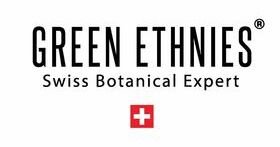 was provisionally refused on the ground that it contained a figurative element representing the flag of Switzerland, suggesting the designated products originate from this country or were endorsed by this State, and that it was therefore necessary to make sure the applicant had obtained an authorization from a competent authority / organization in Switzerland to register this trademark (EUIPO January 26, 2023)
was provisionally refused on the ground that it contained a figurative element representing the flag of Switzerland, suggesting the designated products originate from this country or were endorsed by this State, and that it was therefore necessary to make sure the applicant had obtained an authorization from a competent authority / organization in Switzerland to register this trademark (EUIPO January 26, 2023)
6. Trademark contrary to public order and morality
The trademark 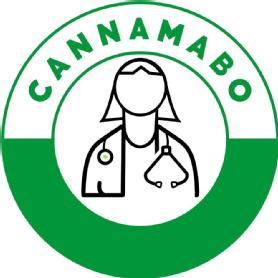 designating namely « pharmaceutical products, dietetic foods and substances for medical use, food for babies, food supplements » was refused by the French IP Institute because it is contrary to public order, because the term « CANNA » used in the sign, referring to cannabis, may lead the public to believe that the prohibition on the production, manufacture… of such narcotic substances has been lifted and that this term is intended to promote them (French IP Institute, January 18, 2023).
designating namely « pharmaceutical products, dietetic foods and substances for medical use, food for babies, food supplements » was refused by the French IP Institute because it is contrary to public order, because the term « CANNA » used in the sign, referring to cannabis, may lead the public to believe that the prohibition on the production, manufacture… of such narcotic substances has been lifted and that this term is intended to promote them (French IP Institute, January 18, 2023).
The trademark PROTEIN MAFIA in classes 5, 25, 41, was refused on the grounds that it undermined public order and morality, since the average consumer in the European Union, particularly in Italy, would associate this sign with the Mafia and organized crime, and thus minimize, promote or trivialize the criminal acts associated with the term Mafia (EUIPO, April 25, 2023).
7. Trademark registered in bad faith
7.1 The application of trademark « SORTEZ COUVERTS ! » for condoms in class 10 by the MAJORELLE pharmaceutical laboratory was judged to have been made in bad faith, as the company could not have been unaware of the use of the “Sortez couverts!” slogan since the 1990s by a journalist during his television and radio broadcasts, and by the POLIDIS company, which, together with the journalist, offered condoms for one French franc in a campaign to combat AIDS.
Thus, the Court of Appeal noted the « clear intention » of MAJORELLE to prevent the exploitation of the sign by the journalist and POLIDIS, and the fact that this company had reserved fifteen domain names using this expression (Paris Court of Appeal, Pôle 5, chamber 1, October 5, 2022, n°21/04997).
7.2 However, three-dimensional trademark application representing hexagonal boxes by the RECORDATI company had not been made in fraud of the rights of the ALLIAS communications and visual identity agency, which had been commissioned to produce presentation leaflets and redesign the packaging for seven of its medicines, since this packaging was not intended to be used by the Alias company, but only to market the Recordati company’s products.
Alias’s design and creative work had therefore not been monopolized, since it was remunerated for this work, which resulted from an order placed by Recordati. The lack of information on the application of this trademark, or the fact that the parties maintained commercial relations, cannot be used to characterize fraud by Recordati in this filing (Paris Court of Appeal, Pôle 5, chamber 2, April 14, 2023, n°21/09779).
II. Opposition to registration
1. The importance of trademark use as a basis for opposition
Study of product similarity based on the products in respect of which use of the earlier trademark has been evidenced.
DIn the opposition which compares the DOLIPRANE trademark and the trademark application ![]() , the EUIPO notes that use of the DOLIPRANE trademark has only been proved for analgesic drugs.
, the EUIPO notes that use of the DOLIPRANE trademark has only been proved for analgesic drugs.
Since the latter “can be considered as forming an objective subcategory of the pharmaceutical products for which the earlier trademark is registered”, the EUIPO considers that the evidence provided attests to genuine use of the trademark, but only for analgesic medicines in class 5.
Recognizing that the marks are visually and phonetically similar, and given the high degree of distinctiveness of the earlier mark DOLIPRANE among the relevant public, the EUIPO recognizes this opposition as well-founded. (EUIPO – April 4, 2023 n° B 3 154 454 – DOLIPRANE / ![]() ).
).
Use of a trademark by a subsidiary of the owner is considered as authorized use by the owner. The capital link between the companies is an indication that use has been authorized.
On September 29, 2020, the Versailles Court of Appeal reiterated that article L.714-5 of the French Intellectual Property Code assimilates to use of a trademark by the owner the use with its authorization.
To determine whether use of the Juvederm trademark is made with the authorization of its owner, the judges take into consideration a number of indicators, including the capital links between the owner and the person exploiting the trademark and the absence of any protest to the exploitation of the trademark.
Thus, it is of little importance that the use of a trademark is carried out by its owner in order to be considered as genuine use. In fact, it is sufficient for the use to be made by a person who has a link with the owner, and who has authorization – even implicit – to make this use. (CA Versailles 1st chamber, 1st section – September 29, 2020 n° RG 19/01666 – Juverderm trademark).
2. Assessment of likelihood of confusion
2.1 Similarity of signs
a. France
In the case of trademarks containing descriptive names, the consumer’s choice is based on the overall impression produced by the trademarks, taking into account the other elements of differentiation present in the trademarks in question.
The opposition of ![]() against
against ![]() was rejected for lack of likelihood of confusion, the INPI considering that, in the absence of distinctive power of the terms BIOTECH and DENTAL, the consumer will focus on the other differentiating elements of the signs (their length, their figurative elements, the ending of their first term, their particular presentation) which in this case make it possible to clearly distinguish these two trademarks (INPI, OP21-4428 of June 29, 2022).
was rejected for lack of likelihood of confusion, the INPI considering that, in the absence of distinctive power of the terms BIOTECH and DENTAL, the consumer will focus on the other differentiating elements of the signs (their length, their figurative elements, the ending of their first term, their particular presentation) which in this case make it possible to clearly distinguish these two trademarks (INPI, OP21-4428 of June 29, 2022).
Parallel with European Union case law :
It is interesting to note that the EUIPO had rejected the European Union trademark BIOTECH DENTAL for lack of distinctive character (EUIPO 22/01/2016) but ruled contradictorily in two oppositions, this time opposing the trademark ![]() to two European Union trademark applications relating to the sign
to two European Union trademark applications relating to the sign ![]() , accepting the first opposition on the grounds that there is a likelihood of confusion in the sole Spanish public’s mind due to the similarity of the word elements BIOTEC and BIOTECH (decision of 09/25/2020), but rejecting the second opposition on the grounds that the relevant public, whose level of attention is high due to the nature of the goods, will attach less importance to the descriptive prefix BIO and will rely on the other elements making up these trademarks, which in this case enable them to be differentiated (decision of 10/13/2020).
, accepting the first opposition on the grounds that there is a likelihood of confusion in the sole Spanish public’s mind due to the similarity of the word elements BIOTEC and BIOTECH (decision of 09/25/2020), but rejecting the second opposition on the grounds that the relevant public, whose level of attention is high due to the nature of the goods, will attach less importance to the descriptive prefix BIO and will rely on the other elements making up these trademarks, which in this case enable them to be differentiated (decision of 10/13/2020).
The importance of the brand’s conceptual meaning.
When comparing the CLARÔME and CLIMAROME trademarks, the Paris Court of Appeal pointed out that, although both share the same attack (C-L) and final (A-R-O-M-E) sequence, the signs do not share visual, phonetic or conceptual similarities.
In particular, both the Court of Appeal and INPI point out that, although both signs refer to the term “Arôme”, the earlier trademark evokes the idea of clarity, whereas the contested trademark application refers to the idea of climate or air conditioning.
Consequently, there is no likelihood of confusion between these two trademarks, even though their products are identical or similar (Paris Court of Appeal, Pôle 5, chamber 2 – RG 21/15853 – June 24, 2022 – CLARÔME / CLIMAROME).
The reproduction of an identical term is not sufficient to prove the existence of a likelihood of confusion if the marks present dissimilarities when taken in their entirety.
The infringement action based on the earlier Well And Well trademark against the WellPharma trademark, company name and domain name is dismissed, as the Paris Court of Appeal considers that there is no likelihood of confusion or association between the signs due to their visual, phonetic and intellectual differences:
- visually t, the earlier mark consists of three symmetrical words detached from one another, whereas the allegedly infringing sign consists of a single word ;
- phonetically, the allegedly infringing trademark differs from the earlier trademark in that there is no repetition of terms within the sign, no pauses in pronunciation and it ends with a different sound ;
- conceptually, the earlier trademark refers to the notion of well-being, whereas the allegedly infringing trademark may also refer to the field of pharmacy.
(Paris Court of Appeal, Pôle 5, chamber 2 – n° 21/05882 – Well And Well / Wellpharma)
b. Europe
The importance of considering the relevant public in the EUIPO’s assessment of the likelihood of confusion.
Novartis AG’s opposition to the trademarks ONBREZ, DAYBREZ, BREZILIZER and BREEZHALER against the trademark BREZTREV filed by AstraZeneca was rejected by the EUIPO, and this decision was confirmed by the European Union General Court.
Since the earlier marks have normal distinctive character and the relevant public has a high level of attention in this sector, the Court considers that this public, even if it is not a health professional, “will not attribute the same commercial origin to goods bearing marks which have a low degree of visual and phonetic similarity and no conceptual significance, as in the present case” (TUE n° T174/22 – March 15, 2023 – ONBREZ, DAYBREZ, BREZILIZER and BREEZHALER / BREZTREV).
With regard to the relevant public, i.e. the general public and professional consumers with an above-average level of attention concerned with “herbicides” and “fertilizers”, the signs ![]()
and AGIL-S are visually similar to an intermediate degree, and strongly similar phonetically. Thus, in view of the normal distinctiveness of the earlier mark, the EUIPO finds that there is a likelihood of confusion between the marks at issue for the relevant public (EUIPO – April 28, 2023 n° B 3 148 313 – AGIL-S / ![]() ).
).
In a decision opposing the marks ![]() and
and 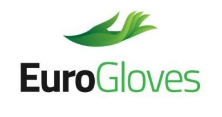 , both designating gloves and garments for medical and surgical use, the EUIPO considers that the relevant public is made up of professional consumers or the general public with a medium to high level of attention.
, both designating gloves and garments for medical and surgical use, the EUIPO considers that the relevant public is made up of professional consumers or the general public with a medium to high level of attention.
According to the examiner, both signs will be perceived as referring to Europe and gloves in the relevant territory (Benelux), and the figurative elements do not increase the distinctiveness of the signs. The opposition is accepted and the trademark application rejected. (EUIPO – n° B 3 159 579 – April 28, 2023 euglove / EuroGloves).
2.2 Similarity of products and services
Products for animals: difference in assessment of similarity between pharmaceutical and cosmetic products
a. Pharmaceutical products: similarity between human and animal products.
En France
In a decision opposing the SAGE and Sagéo Services trademarks, the INPI ruled that even if some of the products covered by the contested trademark application are “exclusively intended for animals and do not fall within the pharmaceutical monopoly (…), they are nonetheless composed of the same active agents – as the ‘pharmaceutical preparations’ designated by the earlier trademark – fulfill the same therapeutic function and all contribute to improving and preserving health“.
These products are similar, although some are intended for animals (INPI – n°OPP 21-4676 – September 27, 2022 – SAGE / Sagéo Services).
In another decision opposing the trademarks 
to DEEPBLUE, the INPI also considers that the “Analgesics” in the earlier trademark, for which serious use has been recognized, are similar on the one hand to the “medicines for veterinary use” in the contested application and also to the “Drugs for medical use; Diagnostic preparations for medical use; Reagent paper for medical use; Disinfectants for hygienic use; Diagnostic preparations for veterinary use; Articles for dressings Disinfecting wipes”, because these, like analgesics, “group together products for medical and/or veterinary use which have a therapeutic function and all contribute to improving and preserving health, particularly in the context of medical care”.
This case law also serves as a reminder that when comparing a semi-figurative sign with a verbal sign, the figurative elements have no impact on the legibility and immediately perceptible character of the verbal elements, so that these figurative elements are not such as to rule out the very close overall perception between the signs.
(INPI – n° OPP 22-1422 – January 6, 2023 – DEEPBLUE /  ).
).
En Union Européenne
When comparing the goods and services claimed by the signs ![]() and
and![]() , the EUIPO considers that the “sanitary preparations for veterinary use; diagnostic preparations for veterinary use” of the contested mark are considered to be similar to a high degree to the “sanitary preparations for medical purposes” of the earlier mark, since they have the same nature, function and use the same distribution channels, involving the same distributors. (EUIPO – n° B 3 151 566 – April 14, 2023 –
, the EUIPO considers that the “sanitary preparations for veterinary use; diagnostic preparations for veterinary use” of the contested mark are considered to be similar to a high degree to the “sanitary preparations for medical purposes” of the earlier mark, since they have the same nature, function and use the same distribution channels, involving the same distributors. (EUIPO – n° B 3 151 566 – April 14, 2023 – ![]() /
/ ![]() ).
).
b. Cosmetic products: no similarity between those intended for humans and those for animals.
Conversely, in a decision opposing the BIOTANICA and BIONORICA trademarks, the INPI refused to recognize the similarity between the “animal cosmetics” in the contested trademark and the “perfumery products, perfume, eau de toilette, essential oils, non-medicated cosmetics, bath and shower gels, bath salts, toilet soaps, deodorants” in the earlier trademark, deodorants” of the earlier trademark, considering that, in the absence of precision, the products of the earlier trademark are intended solely for human beings, since products for animals have very specific characteristics that are quite distinct from those of products for human beings, so that they are the subject of a specific mention in the wording when they are claimed.. (INPI – n° OPP 22-2453 – January 2, 2023 – Bionorica / BIOTANICA).
It is interesting to note that as early as 2022, during an opposition by the Bionorica trademark against the BIONETICA trademark, the INPI had already considered that:
“Products for animals have very specific characteristics that are quite distinct from those of products for human beings, so that they are the subject of a special mention in the wording when they are claimed. These products do not meet the same needs, are in no way substitutable (their composition being different) and are not aimed at the same clientele (pet owners, pet grooming salons and veterinarians/end consumers for their personal hygiene). Thus, these products are not similar, and the public is not entitled to attribute a common origin to them” (INPI – December 2, 2022 n° OP22-18 3 4 / CCH – Bionorica / BIONETICA).
3. Reputed trademark
Pharmaceutical and medical products belong to a specific field of activity: an opposition based on a reputed trademark from a different market and concerning a different public cannot therefore be upheld.
Opposition based on the figurative marks ![]() and
and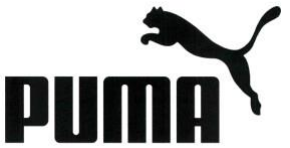 against the trademark application
against the trademark application ![]() was thus rejected the “Diagnostic, examination and control apparatus, namely apparatus comprising soundproof booths for audiometric testing by medical personnel ; sound, excluding instruments for medical use, in particular soundproof booths” of the contested trademark application and the garments covered by the earlier trademarks being different, belonging to different market sectors, targeting different audiences, having a different method of use and purpose and being distributed through distribution channels that do not coincide (EUIPO – N°R 1399/2021-1 – February 27, 2023 – puma soundproofing / PUMA).
was thus rejected the “Diagnostic, examination and control apparatus, namely apparatus comprising soundproof booths for audiometric testing by medical personnel ; sound, excluding instruments for medical use, in particular soundproof booths” of the contested trademark application and the garments covered by the earlier trademarks being different, belonging to different market sectors, targeting different audiences, having a different method of use and purpose and being distributed through distribution channels that do not coincide (EUIPO – N°R 1399/2021-1 – February 27, 2023 – puma soundproofing / PUMA).
***

